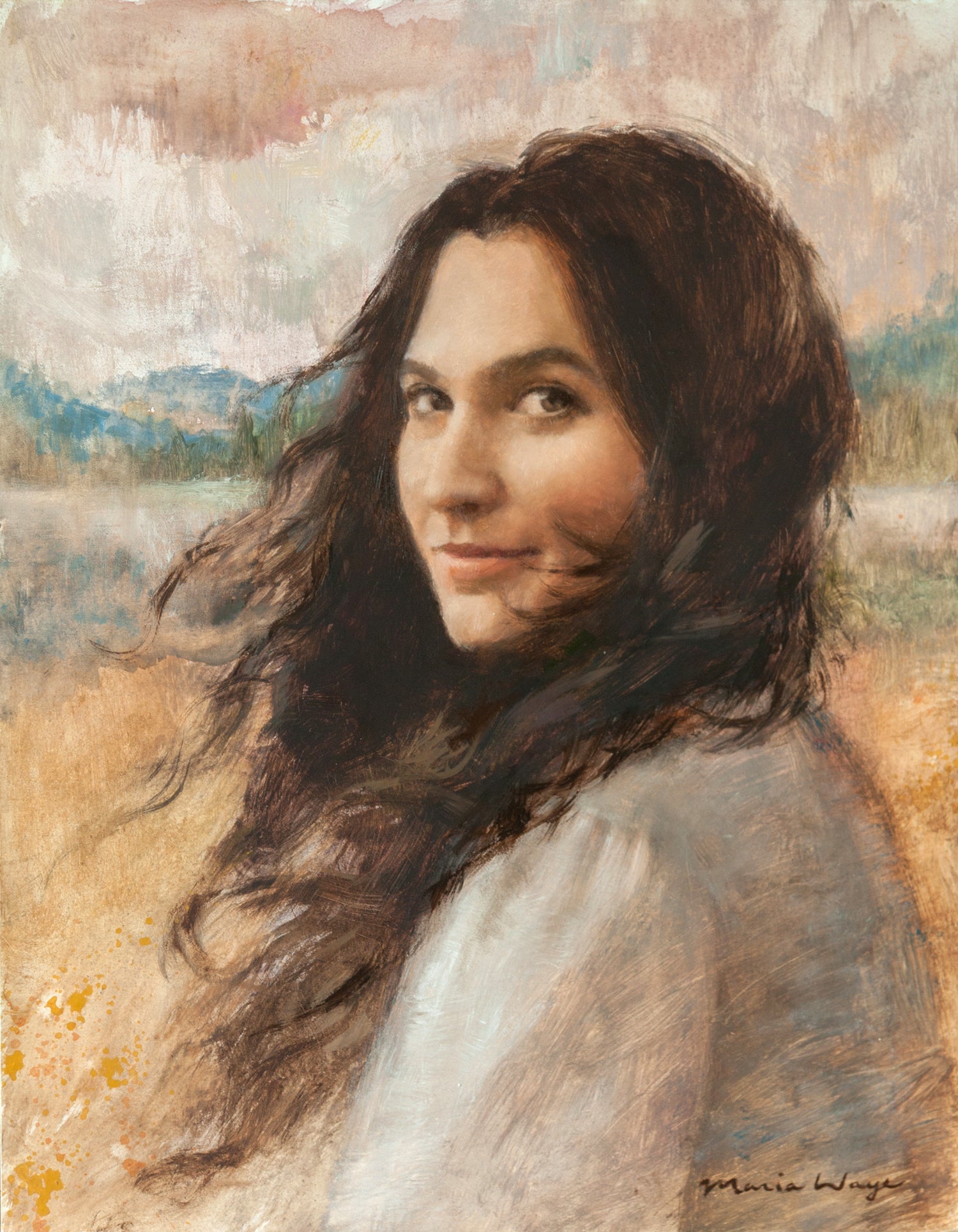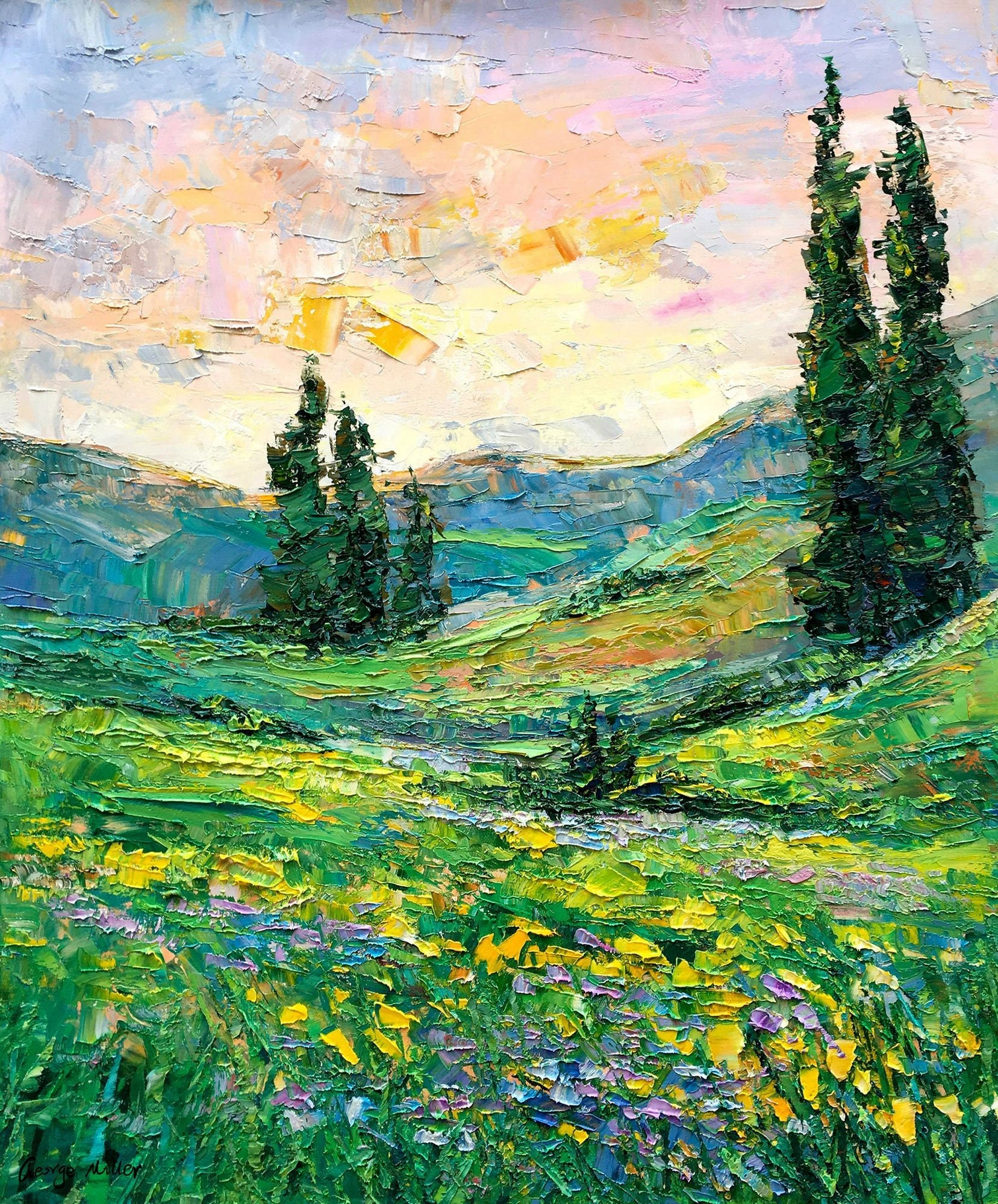Discovering All About Oil Paintings: A Guide to Recognizing Their Elegance and Worth
Oil paintings have mesmerized audiences for centuries, offering a glimpse right into the imaginative proficiency of different eras. Their abundant history is linked with ingenious methods and extensive emotional expression. Recognizing the products and techniques behind these artworks can enhance appreciation. Additionally, the marketplace for oil paintings presents possibilities for enthusiasts and financiers alike. As one discovers this interesting world, the inquiry develops: what makes an oil painting truly beneficial?
The Background of Oil Painting: A Trip With Time
Although oil painting has origins that date back to old times, it absolutely thrived during the Renaissance, when artists discovered its versatility and abundant color possibility. Early instances can be traced to the 7th century, with methods evolving especially across societies. The medium ended up being prominent in Northern Europe in the 15th century, specifically with the jobs of artists like Jan van Eyck, that originated its usage for comprehensive realistic look and vibrant colors. This period noted a separation from tempera paints, enabling better depth and appearance. As oil paint spread, it influenced numerous musicians, leading to work of arts by renowned figures such as Leonardo da Vinci and Rembrandt. The tool's heritage continues, shaping the art globe well right into modern-day times.
Recognizing Oil Paints: Products and Techniques
As musicians explore the world of oil paints, they come across a varied range of materials and strategies that specify this medium. The primary elements of oil paint consist of pigments, which give color, and drying oils, such as linseed, that bind the pigments and promote application. Numerous ingredients can change the paint's texture and drying time, enhancing adaptability. Methods like glazing, where clear layers are developed, and impasto, which includes using thick paint, permit various aesthetic results. In addition, the use of brushes, palette blades, and even fingers can develop one-of-a-kind textures and coatings. Recognizing these techniques and materials enables artists to fully express their creativity and attain the preferred influence in their art work.
The Function of Color in Oil Paintings
Shade plays an essential role in oil paintings, affecting both aesthetic charm and emotional vibration. Comprehending shade concept basics, consisting of the partnerships between hues, can boost an artist's capacity to communicate mood and ambience. Furthermore, mastering shade blending techniques permits for higher deepness and richness in a paint's combination.

Color Theory Basics
Comprehending color theory is vital for artists collaborating with oil paints, as it creates the foundation for creating unified and visually interesting compositions. Shade theory includes the study of just how shades interact, the shade wheel, and the connections in between main, secondary, and tertiary shades. Musicians use complementary colors to improve contrasts and create centerpieces, while similar colors advertise unity and cohesiveness within an item. Furthermore, the concepts of trendy and warm colors affect the understanding of depth and area in a painting. Understanding these concepts enables artists to adjust color effectively, assisting the audience's eye and communicating their designated message. Mastery of shade theory inevitably enriches a musician's capability to share emotions and concepts with their job.
Emotional Influence of Shade
The psychological effect of shade in oil paintings plays a crucial duty in how customers regard and link with artwork. Shades evoke certain feelings and moods, affecting the audience's emotion. As an example, cozy colors like reds and oranges can produce a feeling of heat and energy, while amazing tones such as blues and environment-friendlies often evoke calmness or self-questioning. Artists purposefully select shade schemes to boost narrative components, leading the target market's psychological trip. The saturation and comparison of shades additionally magnify these results, attracting interest and creating focus. Inevitably, the interaction of shades in oil paints not just improves their aesthetic appeal however additionally offers as an effective medium for emotional expression, enriching the viewer's experience and analysis.
Shade Mixing Techniques
While numerous facets of oil paint contribute to the overall composition, understanding shade mixing techniques is important for achieving wanted results and deepness. Shade blending can be approached through various methods, consisting of the subtractive and additive procedures. Additive blending entails integrating shades of light, while subtractive mixing counts on pigments, where shades blend to develop brand-new shades. Artists frequently utilize a limited palette to develop unified jobs, comprehending the connections between key, second, and tertiary shades. Methods such as glazing and scumbling further enhance deepness and brightness. By skillfully mixing shades, a musician can evoke feelings, develop prime focus, and achieve a feeling of realistic look, eventually elevating the paint's psychological and aesthetic impact.
Famous Oil Painters and Their Iconic Functions

Well known for their proficiency of color and strategy, oil painters have produced several of the most celebrated artworks in background. Prominent artists like Vincent van Gogh astounded audiences with his stirring brushwork in "Starry Evening," while Claude Monet's "Impact, Sunrise" prepared for Impressionism. Leonardo da Vinci's "Mona Lisa" stays an enduring sign of creative brilliant, showcasing his ability in catching human expression. At the same time, Rembrandt's "The Night Watch" illustrates his innovative use of light and darkness. Other notable figures consist of Pablo Picasso, that changed modern-day art with his vibrant trial and error in jobs like "Les Demoiselles d'Avignon," and Georgia O'Keeffe, whose lively depictions of flowers and landscapes aided specify American modernism. Each artist's distinct style added greatly to the oil paint landscape.
Just how to Examine the High Quality of an Oil Painting
Reviewing the top quality of an oil painting involves a cautious assessment of workmanship strategies, in addition to an analysis of shade and structure. Observing brushwork, layering, and the application of paint can reveal the musician's ability level. In addition, the interaction of colors and the overall arrangement of elements add substantially to the paint's visual value.
Assessing Workmanship Techniques
A meticulous evaluation of workmanship techniques is important for determining the top quality of an oil painting. Critics ought to initially take a look at the application of paint; thick, textured brushstrokes may suggest a competent hand, while overly uniform applications could indicate an absence of deepness. oil paintings for sale. The layering method is additionally important; the visibility of glazes and differed thickness can improve luminosity and intricacy. Furthermore, the top quality of the materials made use of, such as the canvas and pigments, plays a significant function in resilience and general visual. Attention to information in components like edges and shifts between colors shows the musician's dedication to their craft. Ultimately, these techniques add to the painting's psychological impact and market price, functioning as signs of the artist's ability and intent
Evaluating Shade and Make-up
While assessing the top quality of an oil painting, one must concentrate on the interaction of color and make-up, as these elements are basic to the artwork's general influence. Color selections can evoke feelings and establish mood; therefore, the artist's scheme should be taken a look at for consistency and comparison. A well-balanced structure guides the audience's eye and produces a sense of unity. Artists typically utilize methods like the policy of thirds or leading lines to boost aesthetic rate of interest. Additionally, using light and shadow can add depth, boosting the three-dimensionality of the painting. Ultimately, an effective oil paint weds color and make-up, involving the visitor and welcoming a much deeper admiration of the musician's vision and method.
Caring for and Preserving Oil Paintings
Appropriate care and preservation of oil paintings is important for maintaining their integrity and long life. To shield these art work, it is important to display them away from straight sunlight, which can cause fading and staining. Preserving a steady environment with regulated temperature level and humidity further help in protecting against damages. Cleaning need to be done delicately utilizing a soft, completely dry fabric, staying clear of any extreme chemicals that might harm the paint or varnish. Normal assessments for indications of wear and tear, such as cracking or flaking, are a good idea. When delivering or storing oil paints, correct cushioning and framing are required to prevent physical harm. Inevitably, persistent treatment adds to the aesthetic appeal and worth of oil paints gradually.
The Market for Oil Paints: Investing and gathering
Understanding the market characteristics for oil paints is vital for collectors and capitalists alike. The worth of these artworks is affected by different factors, consisting of the artist's reputation, historical value, and current patterns. Enthusiasts often seek items that resonate personally while taking into consideration potential gratitude in value. Public auctions and galleries serve as primary locations for trading, with costs fluctuating based upon demand and rarity. Purchasing oil paintings needs research into the marketplace, in addition to an understanding of credibility and provenance. Additionally, arising musicians may use opportunities for considerable returns, while developed names can regulate high prices. Generally, a critical technique to collecting can generate both visual pleasure and economic rewards.

Often Asked Questions
What Are the Ecological Effects of Oil Painting Products?
The environmental influences of oil painting materials consist of the release of unpredictable organic substances (VOCs), dangerous waste generation, and resource removal for pigments. These elements contribute to air pollution and ecological destruction, raising issues among eco conscious artists and customers.
How Do Various Canvases Affect Oil Paint Outcomes?
Different canvases affect oil painting results significantly. Surface, appearance, and absorbency quality can alter paint application, drying out times, and color vibrancy. Musicians usually select specific canvases to accomplish preferred impacts and improve their creative expression.
Can Oil Paintings Be Restored if Damaged?
If harmed, Oil paintings can certainly be restored. Specialist conservators make use of various techniques to fix rips, clean surfaces, and address staining, making certain that the art work keeps its original elegance and worth for future generations.
What Are the Signs of an Initial Oil Paint?
The signs of an initial oil paint include visible brush strokes, structure variants, and an irregular canvas weave (oil paintings for sale). Furthermore, authenticity might be verified through provenance, trademarks, and the presence of a varnish layer unique to oil tools
How Has Modern Technology Influenced Modern Oil Painting Techniques?
Technology has actually significantly affected contemporary oil painting methods by introducing digital tools for preparation, enhanced products for texture and durability, and online systems for sharing and selling art, thus increasing artists' innovative possibilities and audience get to. Oil painting has roots that date back to ancient times, it truly flourished throughout the Renaissance, when musicians discovered its convenience and rich color possibility. The emotional effect of shade in oil paints plays website a critical role in exactly how viewers attach and perceive with artwork. While several aspects of oil painting contribute to the total structure, mastering shade mixing techniques is essential for attaining preferred effects and depth. Evaluating the top quality of an oil painting involves a mindful assessment of workmanship methods, as well as an analysis of shade and composition. While reviewing the high quality of an oil painting, one need to focus on the interaction of color and make-up, as these components are basic to the artwork's total impact.